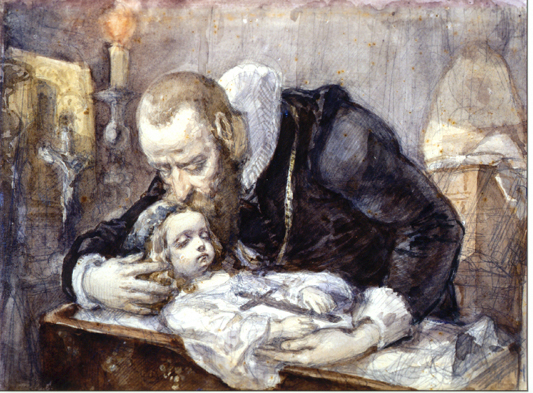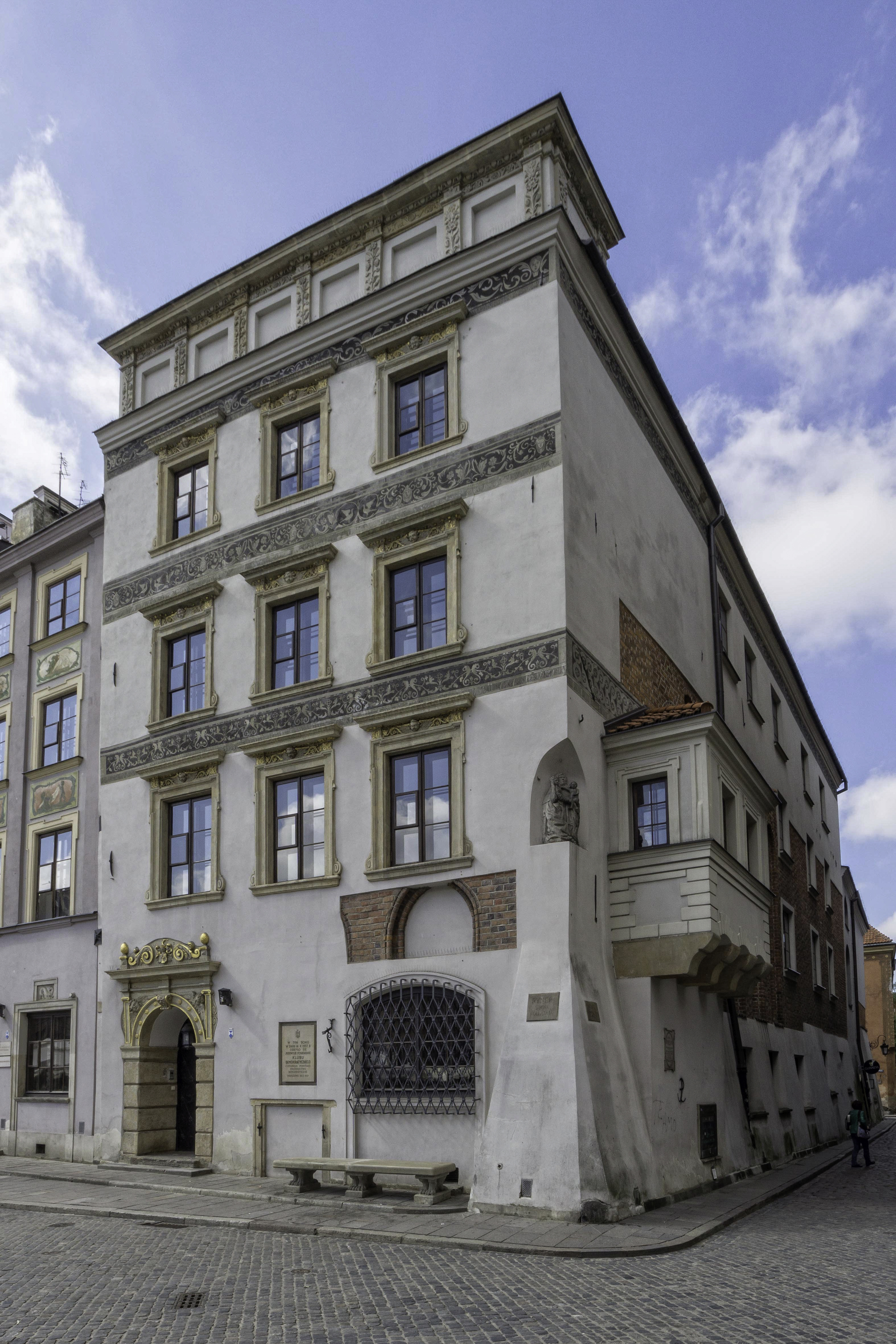|
Ujazdów, Warsaw
Ujazdów (pronounced ) is a prominent neighbourhood situated in central Warsaw, the capital of Poland. It is the southernmost part of the Downtown ( Śródmieście) district, next to Solec and historical Frascati. The main thoroughfare passing through the neighbourhood is Ujazdów Avenue; the Chancellery of the Prime Minister of Poland, the Foreign Ministry and the Belweder Palace are located on or in the vicinity of the street. Ujazdów is an affluent neighbourhood, with villas, palaces and parks comprising most of its area. The most notable landmarks are the Łazienki Park and Palace on the Isle, the 18th century summer residence of Poland's last monarch Stanisław II Augustus. History The name derives from a 13th-century defensive fort (''gród'') and manor called Jazdów which belonged to the Masovian Dukes; its purpose was to defend the nearby settlement of Solec, which was a significant place of trade and commerce on the Vistula river. In 1262, the Grand Duke of Lithuania ... [...More Info...] [...Related Items...] OR: [Wikipedia] [Google] [Baidu] |
Warsaw
Warsaw ( pl, Warszawa, ), officially the Capital City of Warsaw,, abbreviation: ''m.st. Warszawa'' is the capital and largest city of Poland. The metropolis stands on the River Vistula in east-central Poland, and its population is officially estimated at 1.86 million residents within a greater metropolitan area of 3.1 million residents, which makes Warsaw the 7th most-populous city in the European Union. The city area measures and comprises 18 districts, while the metropolitan area covers . Warsaw is an Alpha global city, a major cultural, political and economic hub, and the country's seat of government. Warsaw traces its origins to a small fishing town in Masovia. The city rose to prominence in the late 16th century, when Sigismund III decided to move the Polish capital and his royal court from Kraków. Warsaw served as the de facto capital of the Polish–Lithuanian Commonwealth until 1795, and subsequently as the seat of Napoleon's Duchy of Warsaw. Th ... [...More Info...] [...Related Items...] OR: [Wikipedia] [Google] [Baidu] |
Vistula
The Vistula (; pl, Wisła, ) is the longest river in Poland and the ninth-longest river in Europe, at in length. The drainage basin, reaching into three other nations, covers , of which is in Poland. The Vistula rises at Barania Góra in the south of Poland, above sea level in the Silesian Beskids (western part of Carpathian Mountains), where it begins with the Little White Vistula (''Biała Wisełka'') and the Black Little Vistula (''Czarna Wisełka''). It flows through Poland's largest cities, including Kraków, Sandomierz, Warsaw, Płock, Włocławek, Toruń, Bydgoszcz, Świecie, Grudziądz, Tczew and Gdańsk. It empties into the Vistula Lagoon (''Zalew Wiślany'') or directly into the Gdańsk Bay of the Baltic Sea with a delta of six main branches (Leniwka, Przekop, Śmiała Wisła, Martwa Wisła, Nogat and Szkarpawa). The river is often associated with Polish culture, history and national identity. It is the country's most important waterway and natural symbol, a ... [...More Info...] [...Related Items...] OR: [Wikipedia] [Google] [Baidu] |
Sigismund III
Sigismund III Vasa ( pl, Zygmunt III Waza, lt, Žygimantas Vaza; 20 June 1566 – 30 April 1632 N.S.) was King of Poland and Grand Duke of Lithuania from 1587 to 1632 and, as Sigismund, King of Sweden and Grand Duke of Finland from 1592 to 1599. He was the first Polish sovereign from the House of Vasa. Religiously zealous, he imposed Roman Catholicism across the vast realm, and his crusades against neighbouring states marked Poland's largest territorial expansion. As an enlightened despot, he presided over an era of prosperity and achievement, further distinguished by the transfer of the country's capital from Kraków to Warsaw. Sigismund was the son of King John III of Sweden and his first wife, Catherine Jagiellon, daughter of King Sigismund I of Poland. Elected monarch of the Polish–Lithuanian Commonwealth in 1587, he sought to unify Poland and Sweden under one Catholic kingdom, and when he succeeded his deceased father in 1592 the Polish–Swedish union was created. O ... [...More Info...] [...Related Items...] OR: [Wikipedia] [Google] [Baidu] |
Jan Zamoyski
Jan Sariusz Zamoyski ( la, Ioannes Zamoyski de Zamoscie; 19 March 1542 – 3 June 1605) was a Polish nobleman, magnate, and the 1st ''ordynat'' of Zamość. He served as the Royal Secretary from 1565, Deputy Chancellor from 1576, Grand Chancellor of the Crown from 1578, and Great Hetman of the Crown from 1581. Zamoyski was the General Starost of the city of Kraków from 1580 to 1585, Starost of Bełz, Międzyrzecz, Krzeszów, Knyszyn and Tartu. An important advisor to Kings Sigismund II Augustus and Stephen Báthory, he was one of the major opponents of Bathory's successor, Sigismund III Vasa, and one of the most skilled diplomats, politicians and statesmen of his time, standing as a major figure in the politics of the Polish–Lithuanian Commonwealth throughout his life. Biography Childhood and education Jan Zamoyski was born on 19 March 1542 to Stanisław Zamoyski and Anna Herburt in Skokówka. He started his education in a school in Krasnystaw but when he was thi ... [...More Info...] [...Related Items...] OR: [Wikipedia] [Google] [Baidu] |
Jan Kochanowski
Jan Kochanowski (; 1530 – 22 August 1584) was a Polish Renaissance poet who established poetic patterns that would become integral to the Polish literary language. He is commonly regarded as the greatest Polish poet before Adam Mickiewicz. Life Jan Kochanowski was born at Sycyna, near Radom, Poland. He was the older brother of Andrzej Kochanowski, who would also become a poet and translator. Little is known of Jan's early education. At fourteen, fluent in Latin, he was sent to the Kraków Academy. After graduating in 1547 at the age of seventeen, he attended the University of Königsberg, in Ducal Prussia (a fiefdom of the Crown of the Kingdom of Poland), and Padua University in Italy. At Padua, Kochanowski came in contact with the great humanist scholar Francesco Robortello. Kochanowski closed his fifteen-year period of studies and travels with a final visit to France, where he met the poet Pierre Ronsard. In 1559 Kochanowski returned to Poland for good, where he remained a ... [...More Info...] [...Related Items...] OR: [Wikipedia] [Google] [Baidu] |
Sigismund I Of Poland
Sigismund I the Old ( pl, Zygmunt I Stary, lt, Žygimantas II Senasis; 1 January 1467 – 1 April 1548) was King of Poland and Grand Duke of Lithuania from 1506 until his death in 1548. Sigismund I was a member of the Jagiellonian dynasty, the son of Casimir IV and younger brother of Kings John I Albert and Alexander I Jagiellon. He was nicknamed "the Old" in later historiography to distinguish him from his son and successor, Sigismund II Augustus. Sigismund was born in the town of Kozienice in 1467 as the fifth son of Casimir IV and his wife Elizabeth of Austria. He was one of thirteen children and was not expected to assume the throne after his father. Sigismund's eldest brother and rightful heir Vladislaus II instead became the King of Bohemia, Hungary and Croatia as the successor to George of Poděbrady in Bohemia and then to Matthias Corvinus in Hungary, thus temporarily uniting these kingdoms. When Casimir died, the Polish-Lithuanian realm was divided between the remain ... [...More Info...] [...Related Items...] OR: [Wikipedia] [Google] [Baidu] |
Bona Sforza
Bona Sforza d'Aragona (2 February 1494 – 19 November 1557) was Queen of Poland and Grand Duchess of Lithuania as the second wife of Sigismund I the Old, and Duchess of Bari and Rossano by her own right. She was a surviving member of the powerful House of Sforza, which had ruled the Duchy of Milan since 1447. Smart, energetic and ambitious, Bona became heavily involved in the political and cultural life of Poland–Lithuania. To increase state revenue during the Chicken Rebellion, she implemented various economic and agricultural reforms, including the far-reaching Wallach Reform in the Grand Duchy of Lithuania. In foreign policy, she was allied with the Ottoman Empire and sometimes opposed the Habsburgs. Her descendants became beneficiaries of the Neapolitan sums, a loan she gave to Philip II of Spain which was never completely paid. Childhood Bona was born on 2 February 1494, in Vigevano, Milan, as the third of the four children of Gian Galeazzo Sforza, legal ... [...More Info...] [...Related Items...] OR: [Wikipedia] [Google] [Baidu] |
Janusz III Of Masovia
Janusz III of Masovia (pl: ''Janusz III mazowiecki''; ca. 27 September 1502 – 9/10 March 1526), was a Polish prince member of the House of Piast in the Masovian branch. He was a Duke of Czersk, Warsaw, Liw, Zakroczym and Nur during 1503-1524 (under regency until 1518) jointly with his brother, and sole ruler during 1524-1526 as the last male member of the Masovian Piasts. He was the second son of Konrad III the Red and his third wife Anna, a daughter of Mikolaj Radziwiłł ''the Old'', Voivod of Vilnius and the first Grand Chancellor of Lithuania. Life After the death of their father on 28 October 1503, Janusz III and his younger brother Stanisław inherited his domains, but because they are minors, remained under the regency of their mother. Most of the Masovian inheritance (except Czersk, who was already given to Konrad III as hereditary fief in 1495) was seriously threatened by the Kingdom of Poland at the time of Konrad III's death, and wasn't secured in his sons' ... [...More Info...] [...Related Items...] OR: [Wikipedia] [Google] [Baidu] |
Warsaw Old Town
Warsaw Old Town ( pl, Stare Miasto, italic=yes and colloquially as ''Starówka'') is the oldest part of Warsaw, the capital city of Poland. It is bounded by the ''Wybrzeże Gdańskie'' (Gdańsk Boulevards), along with the bank of the Vistula river, ''Grodzka'', ''Mostowa'' and ''Podwale'' Streets. It is one of the most prominent tourist attractions in Warsaw. The heart of the area is the Old Town Market Place, rich in restaurants, cafés and shops. Surrounding streets feature medieval architecture such as the city walls, St. John's Cathedral and the Barbican which links the Old Town with Warsaw New Town. History The Old Town was established in the 13th century. Initially surrounded by an earthwork rampart, prior to 1339 it was fortified with brick city walls. The town originally grew up around the castle of the Dukes of Mazovia that later became the Royal Castle. The Market Square (''Rynek Starego Miasta'') was laid out sometime in the late 13th or early 14th century, along ... [...More Info...] [...Related Items...] OR: [Wikipedia] [Google] [Baidu] |
Ukrainians
Ukrainians ( uk, Українці, Ukraintsi, ) are an East Slavs, East Slavic ethnic group native to Ukraine. They are the seventh-largest nation in Europe. The native language of the Ukrainians is Ukrainian language, Ukrainian. The majority of Ukrainians are Eastern Orthodox Church, Eastern Orthodox Christians. While under the Polish–Lithuanian Commonwealth, the Austrian Empire, and then Austria-Hungary, the East Slavic population who lived in the territories of modern-day Ukraine were historically known as Ruthenians, referring to the territory of Ruthenia, and to distinguish them with the Ukrainians living under the Russian Empire, who were known as Little Russians, named after the territory of Little Russia. Cossacks#Ukrainian Cossacks, Cossack heritage is especially emphasized, for example in the Shche ne vmerla Ukraina, Ukrainian national anthem. Ethnonym The ethnonym ''Ukrainians'' came into wide use only in the 20th century after the territory of Ukraine obtained ... [...More Info...] [...Related Items...] OR: [Wikipedia] [Google] [Baidu] |




